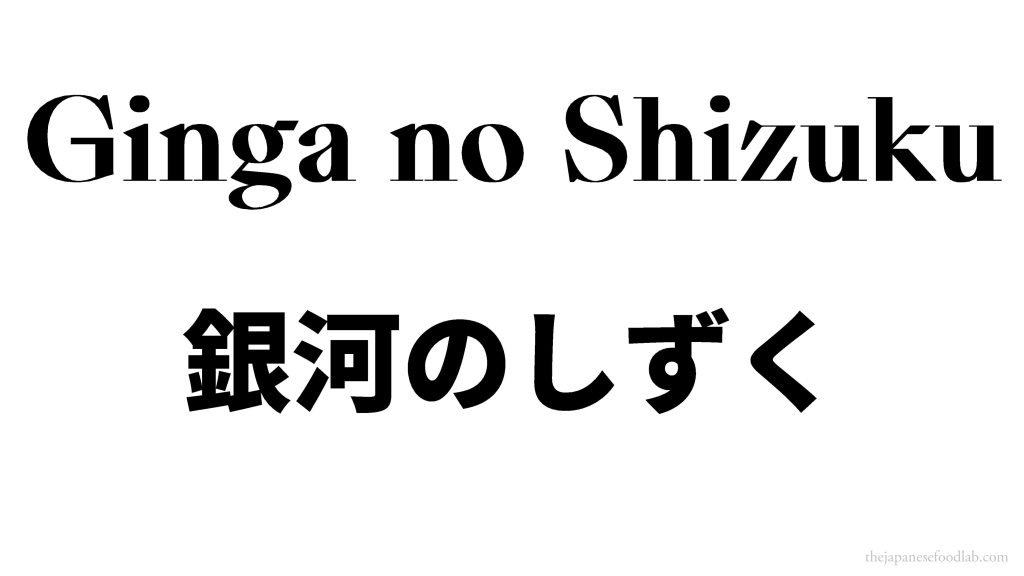
To find out more about other varieties of Japanese rice, see our main page.
Why is Ginga no Shizuku rice special?
Talking about Ginga no Shizuku rice is impossible without talking about Iwate prefecture (岩手県) and it’s incredible success story it has had on its way to produce this rice variety. As a prefecture located in the Tohoku regions (東北地方) of Japan, it neighbors Aomori, Akita and Miyagi prefecture. These three prefectures in our opinion not only produce some of the highest quality rice in Japan, but also have rice varieties that they can call their own. Masshigura and Seiten no Hekireki from Aomori, Akitakomachi from Akita and Hitomebore from Miyagi.
Simplistically, the rice growing regions of Iwate can be separated into the north, center and south of the prefecture. Most of the inland region of Iwate is mountainous, with rice grown along the Mabechi river (馬淵川) in the north and along the Kitakami river (北上川) in the south. These geographical features meant that there was large climate variation among these areas which affected the growing conditions of rice. In order to successfully grow rice in Iwate, farmers had to grow varieties that were suited to the area, with cold-tolerant varieties in the north and disease resistant varieties further down. Back then, Sasanishiki and Hitomebore were planted in the southern part of Iwate Prefecture, and Akitakomachi was planted in the central part and north of the prefecture.
This meant that for a long time, the whole of Iwate mainly grew Hitomebore and Akitakomachi- flagship varieties from other prefectures. Despite the fact that rice grown in southern Iwate frequently obtained Special A ranking during inspection, it was viewed as a second class product compared to Hitomebore grown in Miyagi and Akitakomachi grown in Akita. Therefore, farmers were only able to sell their rice at a lower market price even though it was judged to be as delicious by the Japanese Grain Inspection Association.
After a particularly bad cold spell in 1993 that destroyed a lot of the rice crop in Iwate, there began to be growing demand for a cold tolerant and rice resistant variety that still tasted good. In response, the Iwate Prefectural Agricultural Research Center (岩手県農業研究セン) began searching for varieties that could fulfill these criteria.
Through growing trials and breeding programs, the research center slowly narrowed down potential varieties before trying out experimental plots so that enough rice could be harvested to carry out a taste test. In 2011, the first batch Ginga no Shizuku (known as Iwate No. 107 then) was successfully harvested, and its taste was found to be superior to Akitakomachi when grown under the same conditions.
In 2016, the first crop of Ginga no Shizuku hit the market and the rest is history, with the variety then going on to win the Special A ranking every year after 2018.

Further information about Ginga no Shizuku rice
As a fairly new rice that is not yet widely planted, the production volume of Ginga no Shizuku is still currently quite small. With time, the prefecture intends for plantings to begin in the south, where it will slowly replace currently existing varieties.
Proudly produced and grown in Iwate, farmers also try their best to adhere to standards set by research groups to ensure quality control. This means that minimal fertilizer is also used during cultivation. There is also talk of another more superior rice variety already in the works.
Ginga no Shizuku’s name and logo design concept
Selected from over 8000 submissions, the name Ginga no Shizuku was chosen for this variety. Translating as the Galaxy’s Droplet, the name was inspired by the famous animated movie ‘Night on the Galactic Railroad (Ginga Tetsudo no Yoru/銀河鉄道の夜) by Kenji Miyazawa, who was a famous novelist and children’s literature writer from Iwater. This was decided because the glittering starry “Galaxy” in the movie reminded the farmers of Iwate prefecture. The Shizuku part of the name comes from the glossy white characteristic of the rice.
The vivid design of the Ginga no Shizuku logo represents the nine contributing elements that gave rise to this delicious variety.
- Red represents the shining sun that encourage the growth of the rice
- Grey represents the night sky of the galaxy that nurtures delicious rice
- Blue represents the clean air and refreshing sky
- Brown represents the thorough preparation of soil
- Pink represents the love of everyone involved in rice cultivation.
- Green represents the rich earth where rice grows quickly
- Turquoise represents the river of pure water
- Yellow represents the waves of golden rice ears signifying fertility
- Purple represents fertilizers designed to grow delicious rice
Ginga no Shizuku’s Japanese Grain Inspection Association Ranking
Ginga no Shizuku rice has obtaining the highest rating of Special A (特A) every year since 2018, making it an exceptional rice since it’s appearance on the market.

How does Ginga no Shizuku rice taste?
We recommend reading our article on how rice is evaluated in Japan and our in depth discussion on how rice selection charts work to better understand this section.
Ginga no Shizuku has medium large grains with a moderately sticky and mellow texture. A clean tasting rice, it has a glossy white appearance and balanced taste allowing it to taste the same even when cold. Its mouthfeel is springy yet tender to the bite, making it pair quite well with both fried food and meat dishes at the same time, such as tonkotsu.
Whilst it does not have the same amount of hype and high level marketing as other special A grade rices, it is definitely a good entry level rice for people first diving into specialty rice.